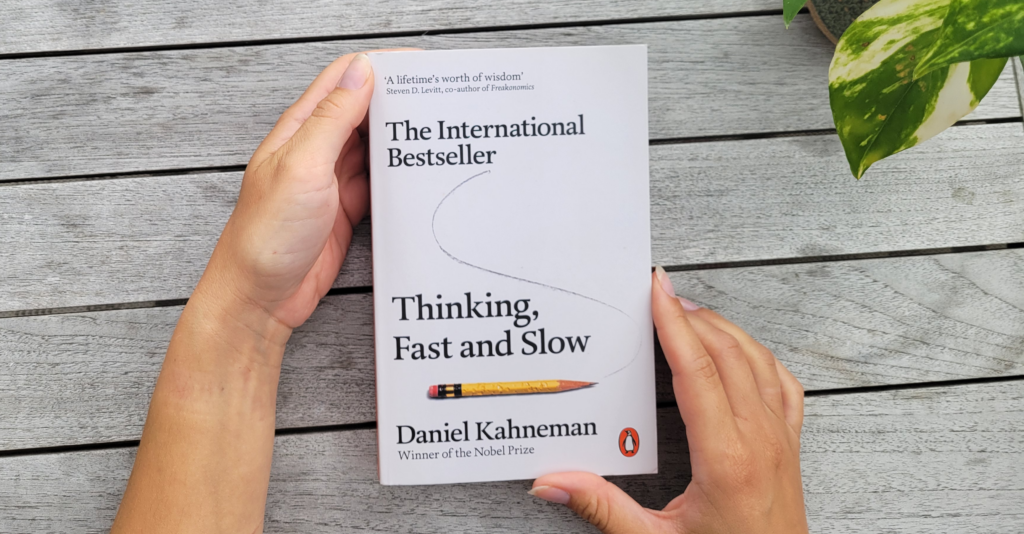Introduction
For the last couple of years, supply chain leaders have been saying that they face increasing uncertainty. Many articles have been published about the fact that our environment has become Volatile, Uncertain, Complex, and Ambiguous. Acronym lovers talk about the VUCA world.
The events around COVID-19 have created a situation that is more volatile, uncertain, complex, and ambiguous than ever.
How realistic is it at this moment to make business decisions based on one demand forecast, one estimate of industrial capacity, one evaluation of supplier capacities? Planning in scenarios seems the only acceptable way to make tactical or strategic decisions.
But how can I do that? Until now, organisations have not widely adopted scenario planning.
Why is scenario planning so important?
Stop playing the blame game
When supply chain decisions prove to be wrong, unreliable forecasts used to be an easy culprit.
Q: "Why do we have too much inventory?"
A: "Because the forecast was wrong."
Q: "Why did we not increase capacity in time?"
A: "Because the demand increase was not in the forecast."
We know that it is impossible to predict the future with absolute certainty. But still, when we make supply chain decisions, we fail to take into account that our predictions include a lot of uncertainty.
By neglecting that uncertainty, we make the wrong decisions. Or we make decisions that are much more fragile than we think. A small deviation in the environment and we are in trouble.
Predictable surprises
Based on my experience, companies allow predictable surprises to disturb their plans. There are several examples.
One example is when a new supplier's first delivery is late. Another example is when more people are absent than expected during flu season. Lastly, a promotion may not have as much success as anticipated.
You are not sure that something will happen, but you know very well that it can happen. That is a predictable surprise.
Companies often assume that everything will go according to plan. This includes the supplier being on time, the promotion being successful, and absenteeism being as expected. If things do not work out as planned, they might have made a decision that costs them a lot of money.
In hindsight, somebody might say: "I knew it. We always have difficulties with absenteeism during that period." Right. So why did it surprise us?
Scenario planning allows checking how things work out if the new supplier delivers on time and if he does not. So your company does not get surprised by something predictable.
Fooled by randomness
Authors like Kahneman and Taleb have proven that people often underestimate the influence of random events in most situations. By planning in scenarios, companies can include a certain degree of randomness into their decision process.
The organisation can protect its people by using scenario planning as the standard approach. This action helps them avoid being deceived by the unpredictability of real life.
Memories of the future
In their book "Traceurs d'avenir", Bruno Tindemans and Derrick Gosselin describe scenarios as Memories of the Future. They argue that planning in scenarios allows organisations to imagine what they would do if certain events would occur.
If the event - or a similar event - occurs, the organisation has already thought about possible reactions and their impact. As a result, it can react more quickly.
The organisation has taken the time to think when the time was not an issue and it can react immediately when the timing is critical.
If it's good for them, it's good for you
Some disciplines have been using scenario planning for ages. Chess players are trained to think several moves ahead, taking into account the possible reactions of their opponent at every move. In real life, military operations are planned in the same way. Military planners imagine different environmental conditions, different reactions of enemy troops, different reactions of the impacted population.
Of course, you can argue that this kind of operation is matters of life and death. But does that mean that we consider our business decisions as unimportant?
In short, there are many reasons for scenario planning: it allows us to become less dependent on reliable forecasts, it helps to avoid predictable surprises and to be prepared when disturbing events occur. But even when the advantages of scenario planning are obvious, many companies do not use scenarios, even in processes like Sales & Operations Planning and Integrated Business Planning.
Why is scenario planning so difficult?
It is too complex for the available planning tools
The most frequently heard reason not to plan in scenarios is that combining all these different assumptions makes planning much more complex. That is true. Planning with only one forecast and one set of supply assumptions is easier.
On top of that, not all planning tools allow users to combine and compare different scenarios easily. That is especially true for planning tools built for operational planning or planning modules embedded in ERP-systems. But how can you prepare for an uncertain future if you can only put only one forecast in the system or plan only with standard supplier lead-times?
People like a good story

In his famous book "Thinking, fast and slow", Daniel Kahneman shows many examples of how our brain likes coherent stories more than complete stories. We prefer 3 coherent arguments in favor of a decision to 5 arguments of which 3 are in favor of a decision and 2 are against it. And when we are convinced of a decision, we will give more importance to the arguments in favor of it than to the arguments against it.
A consequence of this preference for coherent stories is that scenario thinking requires a lot of our self-control. We need to force ourselves to accept that certain decisions could be good in one scenario but bad in another one. Decision making with scenarios is more robust but mentally more frustrating for the decision-maker.
We believe in the law of the small numbers
Everybody knows the law of the large numbers, saying something like "if you have enough occurrences, everything averages out".
The law of the small numbers says that people believe that the law of the large numbers also applies to small numbers.
Although that is a serious mistake, it is a seducing one. As a result, we accept to decide based on average numbers. And we assume quite conveniently that the highs and lows will compensate each other.
In reality, the number of events is often too low to rely on the law of the large numbers. Just the natural randomness of things can make that the total is 10% or 20% higher or lower than what we expected. Not because we made a mistake in our assumption but because of the randomness of the events. But that seems very hard to accept.
What is a large number? A very simple example to give an indication: if you want to have a probability of 95% that, when flipping a coin, the fraction of heads fall between 47% and 53%, you would need to flip the coin 1000 times.
5 practical tips for scenarios planning
There are ways to make scenario planning easier to apply in practice. Based on our experience, we provide 5 of them.
1. 20% prediction, 80% decision
Keep in mind that what counts in planning, is not how well you have predicted the future. What matters is the decisions you have taken.
Start with the decisions that are good in all scenarios. Then look at the decisions that are sometimes good and sometimes bad. Weigh the upsides and the downsides. Pay particular attention to the downside.
Realize that plans are often too optimistic. Can you afford the downside? Can you come back on the decision, if it proves to be wrong?
2. Aggregate, aggregate, aggregate
The level of detail is probably the most important driver for the complexity of planning. It is much easier to combine assumptions, evaluate options, and compare scenarios if each scenario contains only a small set of numbers. You can use these two questions to find the right level of detail:
-
Do you need the details to make your decision? Will it change the decision you make? Suppose you evaluate production capacities. Do you need capacities for each product on each machine to judge if you have the appropriate number of people for the next peak season?
-
Is the precision you add by going into the details relevant compared to the uncertainty in your scenarios? Let us take sales forecasts as an example. You want to evaluate the risks you are willing to take on your critical raw materials. If you have an uncertainty of 20% on the market demand, what is the added value of looking at sales forecasts per country?
The impression of precision created by adding detail generates a false sense of confidence. It is not because the information is more detailed that it becomes more reliable.
3. Not more than 4 scenarios
If you combine different uncertainties, the number of possible scenarios can become huge. But there is no need to make scenario planning too complex. Often enough, building 3 or 4 combinations of assumptions reveals the most important possible outcomes.
A possible approach could be:
-
Scenario 1: if all goes well
-
Scenario 2: if all goes wrong
-
Scenario 3: somewhere in the middle
-
Possible scenario 4: alternative with other things going well and other things going wrong
As an alternative, you could think of four scenarios like these:
-
Scenario 1: the highest demand, the best supply
-
Scenario 2: the highest demand, the worst supply
-
Scenario 3: the lowest demand, the best supply
-
Scenario 4: the lowest demand, the worst supply
4. Start with an extreme best case and worst case
A common pitfall in scenario building is to build the "most likely" scenario first and then to develop an optimistic scenario and a pessimistic scenario based on it. That is rarely a good idea because it leads people to underestimate the degree of uncertainty through a cognitive bias called anchoring. Anchoring is the effect where people let themselves be influenced too much by the first number that is mentioned. Think of bargaining on an attic sale…
By agreeing first on a best-case and a worst-case, you push people to think about the real uncertainty. And only then, you derive the most likely scenario.
Even if we estimate the best-case and the worst-case situation, we tend to underestimate the degree of uncertainty. Do not be afraid to ask for extreme best cases and worst cases to start from.
5. Focus more on assumptions than on numbers
To plan, you need numbers. And that leads to people focusing a lot on the validation of the number.
When planning in scenarios, it is equally important, or even more important to focus on the assumptions. Why do we think demand could drop by 20% in the first half of next year? Why do we believe that the supply of raw material could become extremely short?
When the assumptions behind an estimate are documented, you can check along the way how a situation evolves compared to your assumptions. That helps to judge which scenario could become reality and thus move decisions in the right direction quickly.
Conclusion
In an uncertain world, scenario planning is the only way to make strategic or tactical decisions effectively. Unfortunately, scenario planning is not easy. Planning systems and tools cannot always handle the complexity of combining different assumptions. People dislike uncertainty and hope that the law of large numbers will always apply, even though it doesn't always hold true.
To improve scenario planning, prioritise decisions over predictions. Try to aggregate as much as you can, and keep the number of scenarios manageable. Begin by estimating the best and worst possible outcomes, and pay more attention to assumptions rather than specific numbers.
By doing that, you can use scenario planning effectively to make better decisions. This tool is robust, reliable and allows for efficient decision-making. You can use it even when you face a high level of uncertainty.





